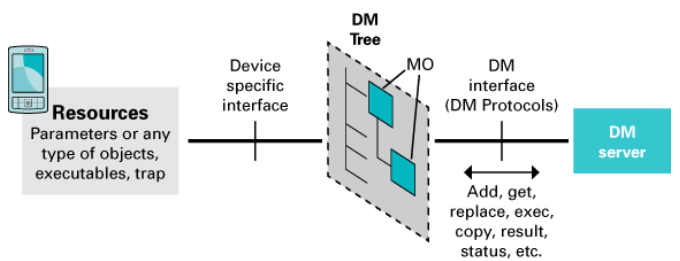Concepts
This table explain briefly the concepts around Device Management Enabler (or service) its protocol and how device functions are exposed (via a management tree) to the remote server
| Concept | Description |
Diagram |
|---|---|---|
| Device Management, (DM) Enabler | The OMA DM Client exposes the device internal data to the OMA DM Server in the form of a hierarchic tree known as the “DM Tree”: it is made up of different building blocks (or sub-trees) called Management Objects providing specific functionality in the management of devices. In other words, the management of a device feature consists of the management of the DM Tree, which virtualizes the device features and functionalities. |
|
| Device Management Protocol | Protocol Commands:
| |
| Device Management Tree | The OMA DM protocol supports the notion of Management Objects (MOs). These are abstract representations of remotely manageable capabilities exposed by the device. All the available MOs pertaining to a device are organized in a hierarchical tree structure known as the Management Tree. The Management Tree may be looked upon as the complete management view of a device’s configuration and operational status. Different DM Servers may “see” different trees, depending upon their access rights to different portions of the Management Tree. |

